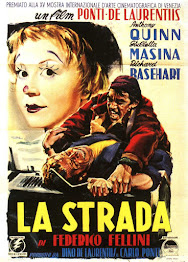Luigi Galleani - anarchist
Activist who mainly operated in the United States
Luigi Galleani, an anarchist active in the United States in the early part of the 20th century, was born on this day in 1861 in Vercelli in Piedmont. Galleani was an advocate of the philosophy of "propaganda of the deed" first proposed by the 19th century Italian revolutionary Carlo Pisacane. The theory was that violence against specific targets identified as representatives of the capitalist system would be a catalyst for the overthrow of government institutions. Between 1914 and 1932, Galleani's followers in the United States - known as i Galleanisti - carried out a series of bombings and assassination attempts against institutions and perceived “class enemies.” The Wall Street bombing of 1920, which resulted in the deaths of 38 people, was blamed on followers of Galleani, who had been deported from the United States to Italy the previous year. The large following he acquired among Italian-speaking workers both in Italy and the United States stemmed from his brilliant oratory. He also edited a newspaper, Cronaca Sovversiva - Subversive Chronicle - which he published for 15 years until the United States government closed it down in 1918. At one point Cronaca Sovversiva had 5,000 subscribers. Read more…
__________________________________________________________
Giovanni Gabrieli – composer
Venetian musician inspired spread of the Baroque style
Giovanni Gabrieli, composer and organist, died on this day in 1612 in Venice. He had been a major influence behind the transition from Renaissance music to the Baroque style in Europe. Born in Venice between 1554 and 1557, Giovanni grew up studying with his uncle, the composer Andrea Gabrieli, for whom he always had great respect. He also went to Munich to study with the musicians at the court of Duke Albert V, which had a lasting influence on his composing style. After his return to Venice he became principal organist at St Mark’s Basilica in 1585. Following the death of his uncle, he took the post of principal composer at St Mark’s as well and spent a lot of time editing his uncle’s music for publication, which would otherwise have been lost. He took the additional post of organist at the Scuola Grande di San Rocco, which was second only to St Mark’s in prestige at the time. The English writer Thomas Coryat wrote about musical performances there in his travel memoirs. Composers from all over Europe came to Venice to study after the publication of Giovanni’s Sacred Symphonies (Sacrae Symphoniae) in 1597. Read more…
__________________________________________________________
Mario Balotelli - footballer
Volatile star of Milan clubs and Manchester City
Controversial footballer Mario Balotelli, who has played for both major Milan clubs in Serie A and for Manchester City and Liverpool in the Premier League in England, was born on this day in 1990 in Palermo. Balotelli scored 20 goals in 54 Premier League matches for Manchester City and made the pass from which Sergio Aguero scored City’s dramatic late winning goal against Queen’s Park Rangers on the last day of the 2011-12 season, which gave City the title for the first time since 1968. He had a difficult relationship with City manager Roberto Mancini, with whom he first worked at Internazionale in Milan, and with Mancini’s successor in charge of the nerazzurri, Jose Mourinho. His volatile temperament has also brought him more red and yellow cards than he and his managers would have liked. Yet he still won three Serie A winner’s medals with Inter in addition to his English title and won the Coppa Italia with Inter and the FA Cup with Manchester City. Balotelli is also a Champions League winner, having been part of the Inter squad in 2009-10, when Diego Milito’s two goals beat Bayern Munich in the final in Madrid. Read more…
___________________________________________________________
Vittorio Sella - mountain photographer
Images still considered among the most beautiful ever made
The photographer Vittorio Sella, who combined mountaineering with taking pictures of some of the world’s most famous and challenging peaks, died on this day in 1943 in his home town of Biella in Piedmont. Even though Sella took the bulk of his photographs between the late 1870s and the First World War, his images are still regarded as among the most beautiful and dramatic ever taken. His achievements are all the more remarkable given that his first camera and tripod alone weighed more than 18kg (40lbs) and he exposed his pictures on glass plates weighing almost a kilo (2lbs). He had to set up makeshift darkrooms on the mountain at first because each shot had to be developed within 10 to 15 minutes. Sella had exploring and photography in his blood. He was born in 1859 in Biella, in the foothills of the Italian Alps. It was an important area for wool and textiles and his family ran a successful wool factory. Sella’s father, Giuseppe, was fascinated with the new science of photography A few years before Vittorio’s birth, he published the first major treatise on photography in Italian. Meanwhile, Sella’s uncle, Quintino Sella, led the first expedition to the top of Monte Viso (or Monviso), the highest mountain in the French-Italian Alps. Read more…























